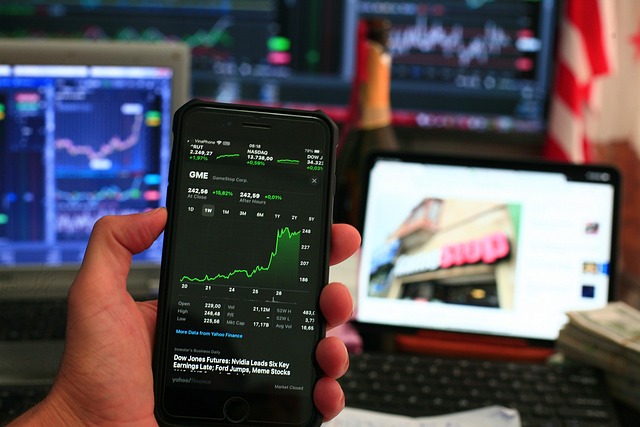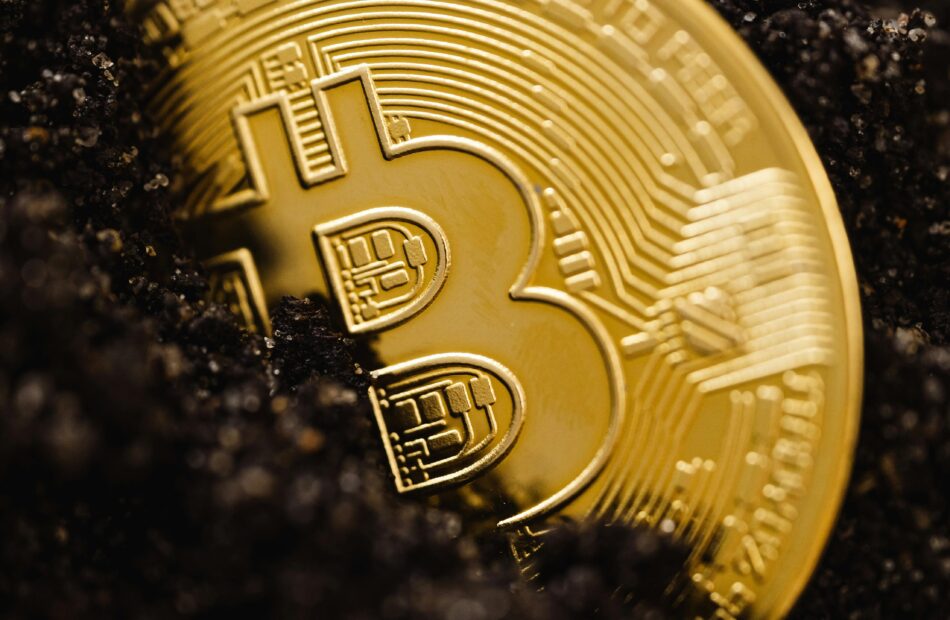EU watchdog wants insurers’ crypto holdings 100% covered, citing volatility
The European Union’s insurance authority has proposed a new rule that would require insurance firms to hold capital equal to the value of their cryptocurrency holdings. This measure aims to mitigate risks for policyholders and is part of a broader effort to regulate the growing use of cryptocurrencies in the insurance industry.
The proposal, put forth by the European Insurance and Occupational Pensions Authority (EIOPA), would set a much stricter standard for crypto assets compared to other traditional assets like stocks and real estate. While these assets only require a fraction of their value to be backed by capital, the proposed rule would mandate a 100% coverage for crypto assets due to their high volatility and inherent risks.
This move comes as the EU’s regulatory framework for insurers currently lacks specific provisions for crypto assets. The proposed rule would fill this gap and align with the Capital Requirements Regulation and Markets in Crypto-Assets Regulation (MiCA).
EIOPA has outlined four options for the European Commission to consider, with the third option of a 100% stress level being the most appropriate according to the authority. This means that insurers would need to hold enough capital to cover a 100% drop in the value of their crypto assets, which is a far stricter approach compared to other assets.
The proposed rule would have the most significant impact on insurers in Luxembourg and Sweden, which account for the majority of crypto asset-related exposures among (re)insurance undertakings. However, EIOPA has acknowledged that the current use of crypto assets in the insurance industry is relatively small, but a broader adoption in the future may require a more differentiated approach.
Overall, the proposed rule aims to protect policyholders and ensure that insurers have enough capital to cover potential losses from their crypto asset holdings. While some may argue that the 100% stress level is too strict, EIOPA believes it is necessary to account for the high risks and volatility of these assets. As the use of cryptocurrencies continues to grow, it is crucial for regulators to establish clear guidelines to protect both insurers and policyholders.
GameStop stocks hit restrictions on NYSE after short volume rockets 234%
The New York Stock Exchange (NYSE) has imposed a Short Sale Restriction (SSR) on GameStop after volume spiked to levels reminiscent of GameStop’s famous 2021 short squeeze.GameStop (GME) short sales volume — the total number of shares sold short within a specific timeframe — rose 234% over 24 hours, reaching 30.85 million shares sold on March 27, according to TradingView data. The SSR kicks in when a stock drops over 10% from the previous day’s closing price. GameStop’s stock fell 22% over the trading day, wiping out its 12% gain from the Bitcoin announcement and then some, according to Google Finance data. At the time of publication, GME was trading at $22.09.GameStop shorts volume near 2021 short squeeze levelsThe rule is applied for the rest of the trading day and the following trading day. Malone Wealth president and CEO Kevin Malone said in a March 27 X post that “GameStop traded 50x more shares today than last Thursday. Not statistically possible without naked short-selling.”GameStop’s short sale volume reached 30.88 million on March 27. Source: TradingViewThe number is close to the levels reached in January 2021 when GameStop stocks famously went meteoric after a “short squeeze” of the stock, causing significant losses for hedge funds and other short sellers while some retail traders made significant returns.The highest point reached during that month was 33.26 million shares on Jan. 19.GameStop Bitcoin buy is “dot-comish”GameStop did not specify how much Bitcoin it plans to purchase, but after the markets closed on March 26, the firm announced a $1.3 billion convertible notes offering.However, some analysts and commentators have questioned GameStop’s plan to start purchasing Bitcoin. Speaking to Yahoo Finance on March 27, Tastylive founder and CEO Tom Sosnoff said that GameStop’s decision to buy Bitcoin feels “a little dot-comish” to him.Source: Hans Akamatsu“It feels a little like, oh, I’m going to throw a dot com at the end of my name, I’m going to buy some Bitcoin with our excess cash because we can’t find a company that is going to be accretive,” Sosnoff said.Meanwhile, Bret Kenwell, US investment analyst at eToro, told Reuters on March 27 that “investors are not necessarily optimistic on the underlying business.”Biggest day of short sales still goes to Keith Gill’s return The biggest day of short sales still belongs to June 3, 2024, when it reached 46.20 million. This was around the time Keith Gill, a stock trader known for the GameStop short squeeze in 2021, revealed on June 2 that he had started trading GameStop stock again, this time with $180 million to play with. Related: Firms without business models ‘buy Bitcoin’ — Angel investor Jason CalacanisGameStop said the convertible senior notes — debt that can later be converted into equity — will be used for general corporate purposes, including acquiring Bitcoin.Some analysts see the convertible notes offering announcement as the reason for the stock’s decline.Han Akamatsu said in a March 27 X post that GameStop’s stock is dropping for the same reason Strategy (formerly MicroStrategy) declined after issuing convertible notes.“In 2021, MSTR issued $1.05B of 0% convertible notes, the stock dipped after the announcement due to hedging shorts, but later exploded when Bitcoin ripped and the arbitrage unspooled,” Akamatsu said, adding:“GME is following the same blueprint now …If GME or BTC goes up a lot, the trade gets very interesting as we have a squeeze opportunity here.”Magazine: Arbitrum co-founder skeptical of move to based and native rollups: Steven GoldfederThis article does not contain investment advice or recommendations. Every investment and trading move involves risk, and readers should conduct their own research when making a decision.
France’s state bank earmarks $27M for crypto with ‘strong French footprint’
France’s state-owned bank says it will spend 25 million euros ($27 million) buying cryptocurrencies that support local crypto and blockchain projects.Bpifrance said in a March 27 press release that it would back newly formed projects “with a strong French footprint” where it will receive tokens in return for its investment and will look to fund decentralized finance (DeFi), staking, tokenization and artificial intelligence.It added that the plan, supported by the French Ministry of Economy and Finance, was to “promote emerging technologies and strengthen the French blockchain ecosystem.”The global blockchain ecosystem is “currently booming” but the number of French funds taking part is still very limited, it said. French digital and AI minister Clara Chappaz said public and private financing was “one of the keys to the sustainable positioning of our ecosystem on the international stage.”Bpifrance deputy CEO Arnaud Caudoux said that it was convinced of the growing importance that blockchain companies “will take on in the years to come and want to increase French competitiveness and presence in the digital assets field.”“The US is really accelerating its own crypto strategy, so this is all the more important,” Caudoux said at a press conference, as reported by Reuters. He added that Bpifrance had started to support crypto before the US started its own pro-crypto moves.Bpifrance’s headquarters in Paris. Source: GoogleThe bank said it had backed the blockchain sector for a decade and had invested over 150 million euros ($162 million), notably helping to finance the crypto hardware wallet company Ledger in 2014.Bpifrance said it began testing limited investments through tokens in 2022, including a deal with the DeFi lending platform Morpho to buy its token — which has grown to be the 12th largest protocol by value at $3.24 billion, according to DefiLlama.Related: Bybit removed from French regulator’s blacklist, eyes MiCA licenseVenture capitalists often take part in investments paid in tokens. PitchBook expects crypto VC deals to top $18 billion this year, a marked increase from the $13.6 billion raised in 2024.Typically, a crypto platform that launches a token will allocate a portion of its supply to financiers subject to varying lockup periods where the tokens can’t be sold.A portion of the token supply is usually immediately given to select public users in order to drum up liquidity, which can cause token values to slide if they cash out.Magazine: How crypto laws are changing across the world in 2025
‘Our GPUs are melting’ — OpenAI puts limiter in after Ghibli-tsunami
ChatGPT creators OpenAI have introduced rate limits after a viral social media trend that saw nearly everything “Ghiblifyied” — turned into AI art in the style of the famous Japanese animation studio. OpenAI CEO Sam Altman was one of the first to take part in the trend, posting a portrait of himself generated by the model on March 25 but said in a subsequent post two days later that all image requests have started to tax the firm’s infrastructure.“It’s super fun seeing people love images in ChatGPT but our GPUs are melting. We are going to temporarily introduce some rate limits while we work on making it more efficient,” he said.Source: Sam Altman“Also, we are refusing some generations that should be allowed; we are fixing these as fast we can,” he added.OpenAI launched the upgraded image generation offering in ChatGPT-4o on March 25, resulting in users splashing images across social media in the art style of Studio Ghibli — known for its anime films Spirited Away and My Neighbor Totoro.Altman didn’t give a definitive timeline on how long the rate limits would last but said, “Hopefully, it won’t be long! ChatGPT free tier will get three generations per day soon.”Rate limits are generally applied to help OpenAI manage the aggregate load on its infrastructure, according to OpenAI. Related: Ghibli memecoins surge as internet flooded with Studio Ghibli-style AI images“If requests to the API increase dramatically, it could tax the servers and cause performance issues. By setting rate limits, OpenAI can help maintain a smooth and consistent experience for all users,” OpenAI says on its rate limit explanation page.Along with the legions of others getting in on the trend, X and Tesla CEO Elon Musk shared an image mimicking King Mufasa from Disney’s The Lion King holding up a Shiba Inu. White House AI and crypto czar David Sacks also joined in, using the Studio Ghibli-art style on an image of himself at an event.Source: David SacksMeanwhile, Bloomberg reported on March 26 that OpenAI expects to more than triple its revenue this year to $12.7 billion, citing a person familiar with the matter.Altman said on Feb. 12 his firm wants to ship GPT-4.5 and GPT-5 in the coming weeks or months.Magazine: ‘Chernobyl’ needed to wake people to AI risks, Studio Ghibli memes: AI Eye
SEC has officially closed its investigation into Crypto.com, CEO says
The US Securities and Exchange Commission (SEC) has officially closed its investigation into Crypto.com, a popular cryptocurrency exchange, with no action taken against the company. This news was announced by the firm’s CEO, Kris Marszalek, who stated that the investigation had been ongoing for seven months before being closed.
Back in August, the SEC had issued a Wells notice to Crypto.com, indicating its intention to take legal action against the platform. This caused concern and uncertainty within the crypto community, as the SEC has been known to take a strict stance on cryptocurrency regulation.
Marszalek expressed his frustration with the investigation, stating that the SEC had used every tool at their disposal to try and hinder the growth of Crypto.com. This included restricting access to banking, auditors, and investors, in what he believes was an attempt to shut down the entire industry.
However, despite these challenges, Crypto.com persevered and even filed a lawsuit against the SEC in October. The lawsuit accused the commission of overstepping its authority and taking a misguided approach to regulating the crypto industry.
The fact that Crypto.com not only survived but also became stronger is a testament to the company’s vision and the support of its community. Marszalek shared this sentiment in a post on X, a social media platform, where he also announced the closure of the SEC investigation.
The news of the investigation being closed with no action taken against Crypto.com has been met with relief and celebration within the crypto community. Many see this as a win for the industry and a step towards more favorable regulation in the future.
This is a developing story, and more information will be added as it becomes available. In the meantime, Crypto.com continues to thrive and provide its users with a secure and reliable platform for trading and investing in cryptocurrencies.
If you want to stay updated on the latest news and developments in the crypto industry, be sure to subscribe to Crypto Biz Newsletter, a subscription service offered by Crypto.com. This will ensure that you never miss out on important updates and insights from the world of cryptocurrency.
Getting crypto out of the 'AOL era' — Sandeep Nailwal
The current state of crypto is akin to the internet’s “America Online” (AOL) era during the late 1990s, when the user experience was clunky, technical, featured limited use cases, and moved at dial-up speeds, according to Polygon co-founder Sandeep Nailwal.In an interview with Cointelegraph, Nailwal identified several key areas of development to improve user experience, including seamless fiat on- and off-ramps, custody solutions that feature key recovery, and hardware wallets built into mobile devices.”We are in the dial-up era of the internet where even connecting to the Internet was a tedious task, like you had to be a mini-engineer to be able to connect to the Internet — we are still there in crypto.” —Sandeep Nailwal“We are probably still in 1998, and it is going to take at least 10 to 15 years to see crypto in its full glory,” the Polygon founder added.While considered revolutionary at the time, the AOL days of the internet featured limited functionality and a high barrier to entry. Source: PC MagazineThe internet took between 30-40 years to achieve mass adoption and began with a limited number of use cases. In the late 1990s, the AOL era of the internet was primarily focused on email and basic web browsing, but today, the internet encompasses the entire economy.Nailwal said that the current state of crypto is similar, with financial use cases, particularly market speculation, being the core focus of crypto at this time.However, once the financial use cases have been fully developed and achieved sufficient adoption, crypto adoption will spread to alternative use cases such as decentralized social media, gaming, and other niche sectors, he said.Related: Security concerns slow crypto payment adoption worldwide — SurveyBeing in crypto today is being early to the partyNailwal pointed out that even the base use case for cryptocurrencies, which is financial, has not been fully developed.According to a February 2025 report from Bitcoin (BTC) financial services company River, only 4% of individuals worldwide own BTC — which is the original cryptocurrency with the largest market cap and has the most mainstream appeal.Bitcoin’s adoption path. Source: RiverThe report found that BTC has only achieved about 3% of its total adoption path when institutions, the total addressable market, and proper portfolio allocations are considered.This small number of BTC holders indicates that crypto mass adoption is still years away and signals that the entire industry is still in the early adopter phase of development.Magazine: They solved crypto’s janky UX problem — you just haven’t noticed yet
US DOJ says it seized Hamas crypto meant to finance terrorism
The US Justice Department (DOJ) has made a major breakthrough in disrupting terrorist financing through cryptocurrency. In a statement released on March 27, the DOJ announced that it had seized over $200,000 in cryptocurrency intended to benefit the militant group Hamas.
According to the DOJ, the seized funds were traced to fundraising addresses allegedly controlled by Hamas and used to launder more than $1.5 million in digital assets since October 2024. This laundering was carried out through a series of virtual currency exchanges and transactions, involving suspected financiers and over-the-counter brokers. The funds are currently being held in at least 17 wallets.
This is not the first time that the US government has taken action against Hamas-linked cryptocurrency activities. In January 2024, the US Treasury’s Office of Foreign Assets Control, along with corresponding organizations in the United Kingdom and Australia, announced sanctions against networks and facilitators of crypto transactions linked to Hamas. These sanctions were built upon previous US Treasury sanctions from October 2023.
In a separate incident, three families of victims of a Hamas attack against Israel filed a lawsuit against Binance and its former CEO Changpeng Zhao, alleging that the exchange had provided “substantial assistance” to terrorists. However, in oral arguments, a lawyer representing Binance claimed that the exchange had no special relationship with Hamas.
Binance has also faced scrutiny from the US government over alleged shortcomings in its Anti-Money Laundering controls. In November 2023, the exchange settled with the DOJ for $4.3 billion.
The use of cryptocurrency by terrorist organizations for fundraising has become a growing concern for the US government. Some officials have even questioned whether the industry needs more supervision or regulation to prevent such activities.
However, a report by the Congressional Research Service in December 2024 stated that the scale and effectiveness of Hamas’ cryptocurrency fundraising efforts have been unclear. Additionally, a 2023 report by Chainalysis revealed that terrorism financing accounts for a very small amount of crypto usage, with illegal groups primarily using traditional, fiat-based methods to fund their operations.
In conclusion, while the use of cryptocurrency by terrorist organizations is a cause for concern, it is important to note that it is not a widespread issue. The US government and other regulatory bodies will continue to monitor and take action against any illegal activities involving cryptocurrency.
Solana price struggles to flip $150 to support — Is the SOL bull market over?
Solana’s native token, SOL (SOL), faced a sharp 8% rejection after briefly touching $147 on March 25. For the past three weeks, SOL has struggled to reclaim the $150 level, which is leading traders to question whether the bullish momentum that was originally driven by memecoin speculation and the rise of artificial intelligence sectors has come to an end.Some analysts argue that SOL price could significantly benefit from the eventual approval of a Solana spot exchange-traded fund (ETF) in the United States, as well as the expansion of tokenized real-world assets (RWA) on the Solana network, including stablecoins and money market funds. Others, like Nikita Bier, co-founder of TBH and Gas startups, believe Solana has “the fundamental building blocks for something to break out on mobile.”Source: nikitabierBier highlighted the constructive regulatory environment from US President Donald Trump and the long-term impact of the memecoin frenzy, which introduced “millions” of new users to Web3 wallets and decentralized applications (DApps). Essentially, Nikita Bier believes Solana is well-positioned due to its streamlined onboarding experience for mobile users.The lackluster Bitcoin reserve announcement hurt all cryptocurrenciesDespite the potential for establishing a “consumer-grade” marketplace for DApps, most traders suffered losses as the memecoin mania faded and onchain volumes plunged. This decline has led investors to question whether SOL has the strength to reclaim levels above $150. Beyond the waning interest in DApps, Solana is also facing growing competition from other blockchains.Additionally, the realization that the US government would not purchase altcoins for its strategic reserve and digital asset stockpile was a major disappointment for some investors. On March 6, President Trump signed a bill allowing budget-neutral strategies for the US Treasury to acquire Bitcoin (BTC), while altcoins in government possession could be strategically sold. In fact, there was no explicit mention of Solana or any other altcoin in the Digital Asset Stockpile executive order.Some may argue that the Solana ecosystem extends far beyond memecoin trading and token launchpads, as total value locked (TVL) has grown across liquid staking, collateralized lending, synthetic assets, and yield platforms. However, Solana’s fees and DApp revenues have continued to decline. Reduced onchain activity reduces SOL’s appeal to investors, thus limiting its upside potential.Solana 7-day DApp revenues (left) and chain fees (right), USD. Source: DefiLlamaSolana DApp revenues totaled $12 million in the seven days leading up to March 24, down from $23.7 million just two weeks earlier. Similarly, base layer fees reached $3.6 million in the same period, a sharp drop from $6.6 million in the seven days ending March 10. Interestingly, this decline occurred while the total value locked (TVL) remained stable at 53.2 million SOL.Related: Specialized purpose DEXs poised for growth in 2025 — Curve founderSolana is no longer the dominant network in DEX volumesThe drop in Solana’s onchain activity is particularly concerning given that BNB Chain surged to the top spot in DEX volumes, despite having 34% less TVL than Solana, according to DefiLlama data.Decentralized exchanges volume market share. Source: DefiLlamaIn terms of volume, Solana dominated the DEX industry from October 2024 to February 2025 but has recently lost ground to Ethereum and BNB Chain. As a result, part of SOL’s price weakness stems from a decline in Solana’s onchain activity compared to its competitors. For instance, trading volume on Hyperliquid increased by 35% over the past seven days, while activity on Pendle surged by an impressive 186%.Although fundamentals do not indicate an imminent rally above $150, the Solana network uniquely combines an integrated user experience with a degree of decentralization that has proven successful. For example, while BNB Chain and Tron offer similar scalability, neither has had a wallet or DApp rank among the top 10 on the Apple App Store—unlike Solana’s Phantom Wallet in November 2024.This article is for general information purposes and is not intended to be and should not be taken as legal or investment advice. The views, thoughts, and opinions expressed here are the author’s alone and do not necessarily reflect or represent the views and opinions of Cointelegraph.








